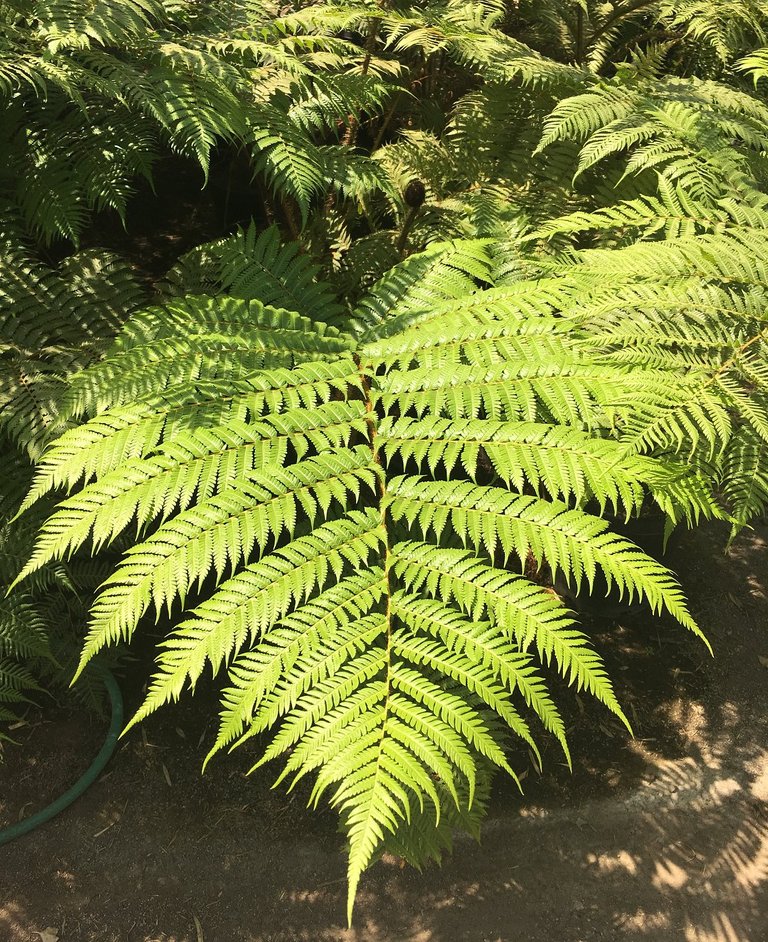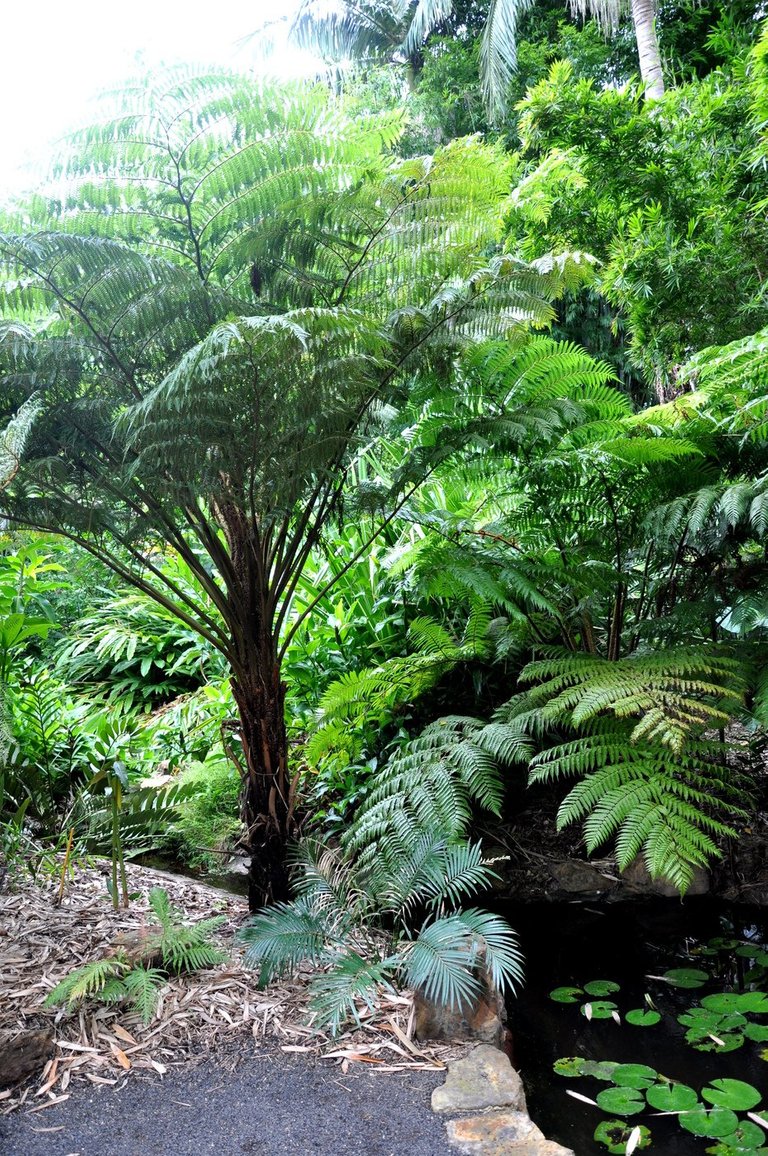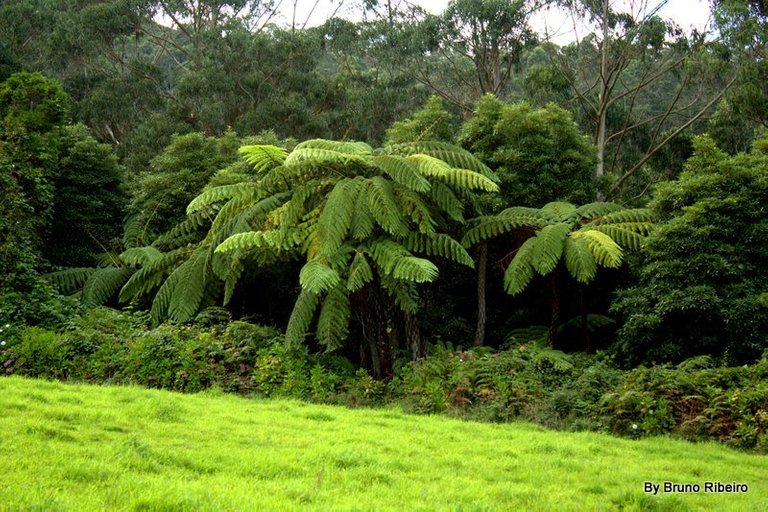Cyathea cooperi is native to eastern Australia, but it thrives in many other places in the world where there are mild winter temperatures, dappled sunlight and plenty of moisture. It can also become invasive, particularly in tropical and warm temperate regions like Hawaii. The pale trunk, which can reach 30-40 feet, is marked with contiguous oval scars from older fronds. The pinnae or leaflets are divided several times, giving Cyathea cooperi its 'lacy' look. The new fronds or 'fiddleheads' are particularly beautiful, curled up with a delicate covering of silky hairs. They are often called 'crosiers,' as they resemble the staff bishops carry in religious ceremonies. The undersides of the mature fronds are covered with dusty brown sori aligned in rows. These sori protect the developing masses of dusty brown spores.

Dicksonia antarctica, native to Tasmania and eastern Australia, is also widely planted in the Park. It tolerates far lower temperatures than Cyathea cooperi. Its trunk is rough and covered with the broken off remnants of spent fronds. Look for both species in the Ancient Plant Garden and the Australia Collection alongside other species of tree ferns.
article source

